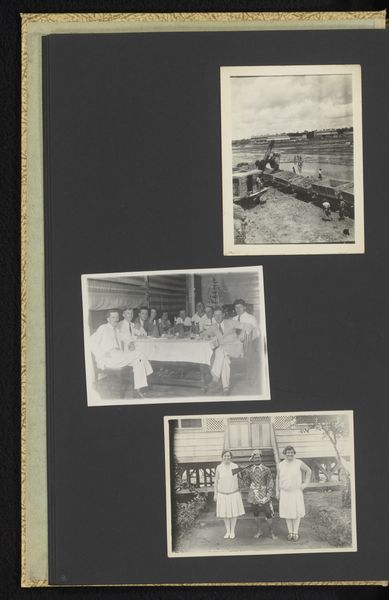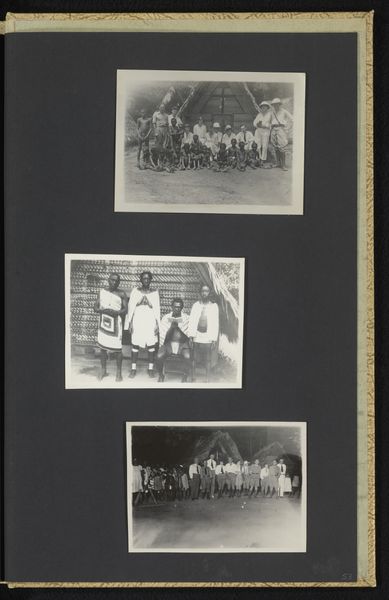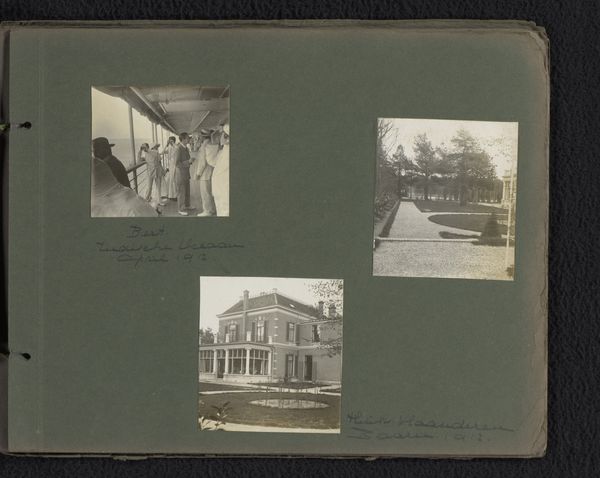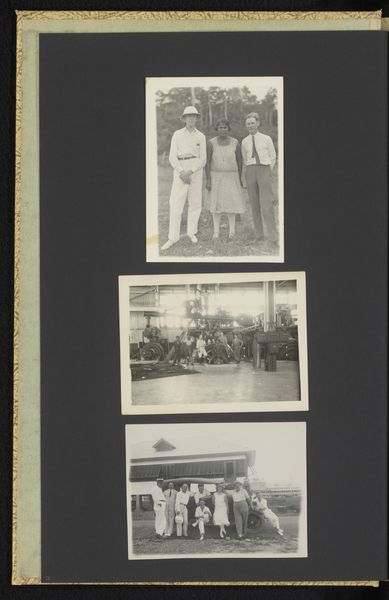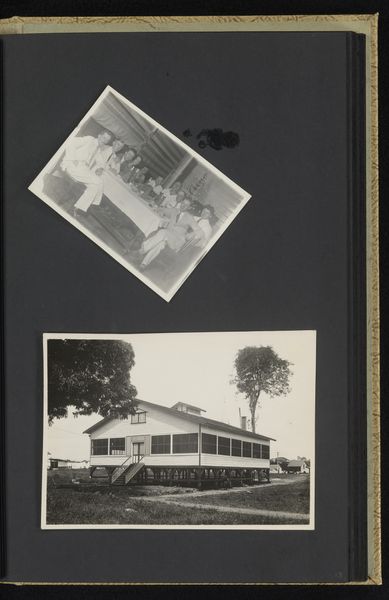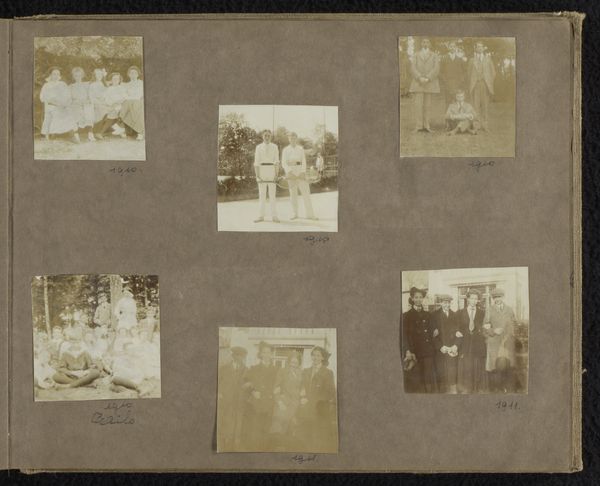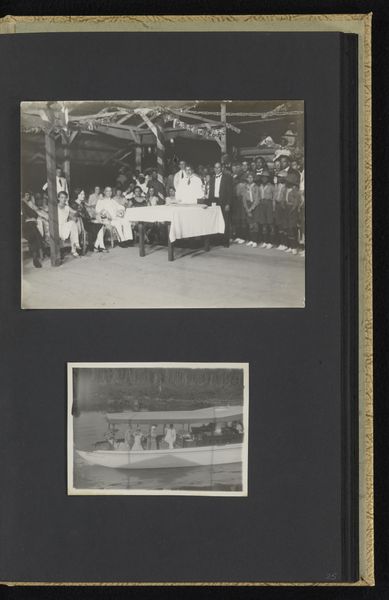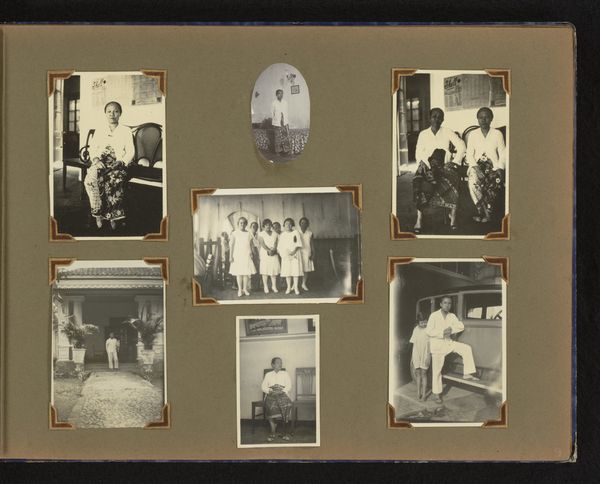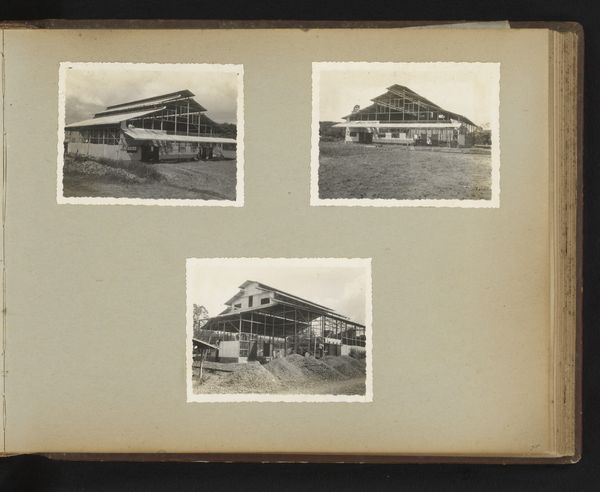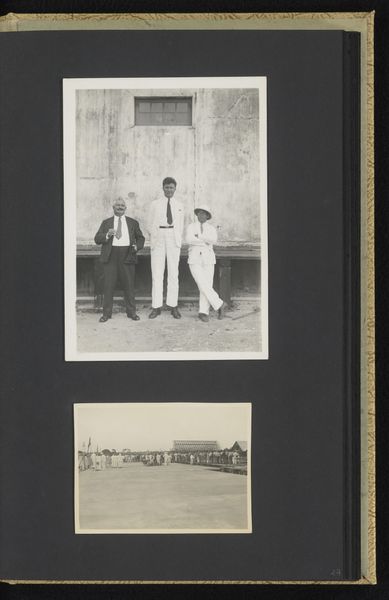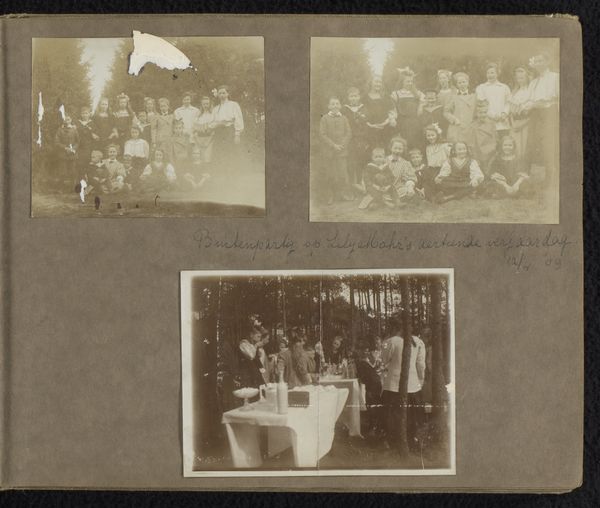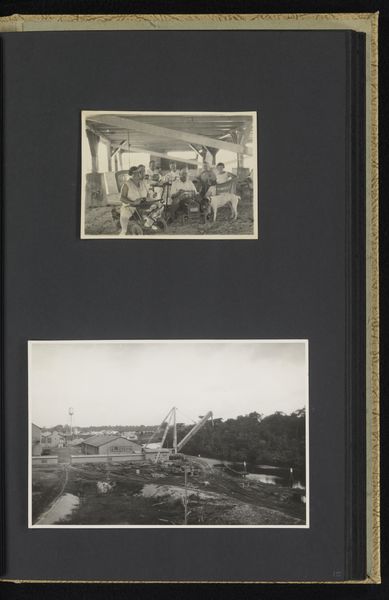
print, photography
#
portrait
# print
#
landscape
#
photography
Dimensions: height 128 mm, width 178 mm, height 350 mm, width 220 mm
Copyright: Rijks Museum: Open Domain
Curator: This is an intriguing triptych of snapshots in an old photo album. Entitled "Op de tennisbaan, in bed en woning", or "On the tennis court, in bed and home," dating around 1929-1930. Editor: What strikes me immediately is the staged quality of each photograph, like carefully arranged tableaux from another world. A very nostalgic, perhaps romantic lens. Curator: That's insightful. Notice how the black and white prints present a segmented narrative: we see what seems to be a tennis team portrait at the top, followed by an image of people reclining in bed in the middle, and the image of a house with large open porches. A unique narrative for a family portrait. Editor: The repetition of figures in each photo begs the question if these photos can also be thought of as symbolical? Are these perhaps an extended depiction of social position at a particular moment? We might consider the tennis court symbolizing their leisure time. Curator: Good eye. I didn't see that at first. Considering it now, there is indeed a sense of how social customs dictate these positions of status: on the tennis court is an emblem of physical vitality, domestic coziness represented in bed, while home might echo ideas of shelter, or stability. But all these images speak of privilege at the end. Editor: Exactly. By the way the tennis outfits are immaculate. The posture, in particular. But then look at the relaxed, languid poses of the bed photo. Even the home is elevated—both physically, on stilts, and metaphorically, away from the mundane. The image leaves the idea that it provides us an allegory on what "home" should mean at the time. Curator: Perhaps, or perhaps the unknown photographer meant for a glimpse of real life for remembrance. A captured piece of time—even a banal one—frozen. In the end, regardless of what any symbol may reveal, memory makes this series powerful and valuable for a reflection about time. Editor: Agreed. It speaks volumes—though sometimes nostalgia has to be challenged with the reality of these selective moments and symbols it represents. This exercise helps with critical reflections, as a form of artful, historical expression.
Comments
No comments
Be the first to comment and join the conversation on the ultimate creative platform.
